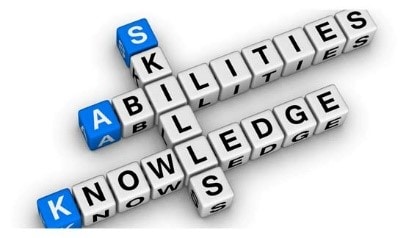A big part of estimating the cost to develop an eLearning course is to correctly determine the level of learning. If you read the first post in this series, Estimating Formulas for Documentation and Training, you know that I use three levels of eLearning. Recently, people have been using four levels: a base level, a low and high mid-level, and a high level. I have not had the need to further divide the mid-level in order to meet a client’s requirements or to create an accurate estimate. If you want to compare my three levels to a four level breakdown, SHIFT’s eLearning Blog provides good examples for comparison.
There are a few factors to consider when determining which level of eLearning to use:
What is the learning goal?
- What skills do the learners need to demonstrate by the end of the training?
- How will the eLearning be used?
- What amount and type of interactivity and navigation will be in the eLearning?
Following is a chart that shows how each level meets the above requirements. This chart helps to understand how the training goal and requirements effect the cost of development and to insure that the correct level is being used to accomplish the desired end result.
| Level 1 | Level 2 | Level 3 | |
| Learning Goal | Knowledge
Awareness Comprehension |
Comprehension
Application Skill development |
Skill development to determined level of competency
Analysis Synthesis Evaluation |
| Skills Demonstrated | Observation and recall of information
Knowledge of major ideas Understanding of information Grasp meaning |
Translate knowledge into new context
Interpret facts, compare, contrast Order, group, infer causes Predict consequences Use information, methods, concepts, theories in new situations Generalize from given facts Organization of parts and Identification of components |
Distinguish differences and patterns
Recognition of hidden meanings Relate and compare knowledge from several areas Predict, draw conclusions, solve problems Make choices based on reasoned argument and recognize subjectivity Verify value of evidence |
| Best Suited For … | Best for situations where content is key. Considered passive learning. Information has short shelf-life, i.e. changes frequently.
Examples include: changes in HR policy, information updates on processes or simple new features of existing products. |
Introduces scenario based learning. Considered limited interaction learning. Information has longer shelf-life, i.e. changes infrequently.
Examples include: new product introductions, new processes or procedures and complex new features for existing products. |
Considered complex interaction. Helps learner learn by doing.
Preparing employees for situations they will face on the job. Examples include: new software, picking the right product, customer service, coaching, sales situations and Six Sigma. |
| Interactivity and Navigation | Low technology requirements, 75% of course is text-based, content-centric, may resemble an on-line presentation
Basic interactions utilizing graphics and text including roll-overs, hot spots and pop up boxes. “Click-through” learner experience. Tests learners’ understanding with limited use of quizzes, self-checks, and pre and post-tests containing true and false, multiple choice, single select, true/false, paired list, paired sort, multiple select, click to reveal, pull down menus, fill in the blank text boxes, matching textboxes, ordering textboxes, matching and drop and drag activities Up to 25% of the course or learning objects are media rich Uses linear navigation |
More frequent and complex interactions including linear simulations and scenarios occur at least every 3rd slide
Use of rich multi-media of at least two types, including animations, scenarios, real-life case studies and examples 25-50% of the course or learning objects are media rich Uses linear navigation |
Sophisticated degree of interactivity; including simulations involving branching or pathing, case study based testing and assessment, gaming technology and text entry boxes
50-100% of the course or learning objects are media rich including animation, audio, and video Course may utilize non-linear navigation |
| Development Time | 160 hours / hour of seat time | 227 hours / hour of seat time | 333 hours / hour of seat time |


 What is the learning goal?
What is the learning goal?